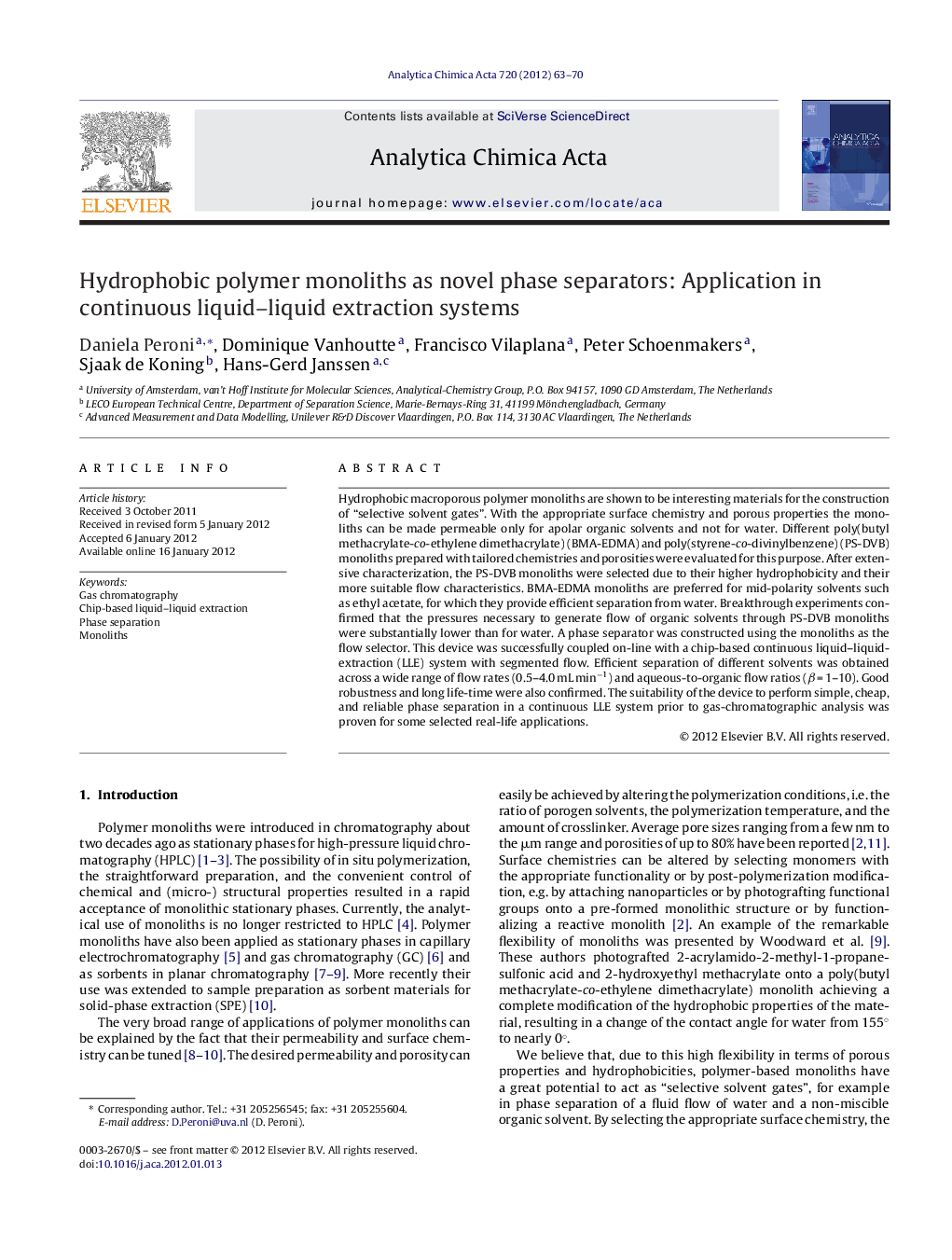| Article ID | Journal | Published Year | Pages | File Type |
|---|---|---|---|---|
| 1165767 | Analytica Chimica Acta | 2012 | 8 Pages |
Hydrophobic macroporous polymer monoliths are shown to be interesting materials for the construction of “selective solvent gates”. With the appropriate surface chemistry and porous properties the monoliths can be made permeable only for apolar organic solvents and not for water. Different poly(butyl methacrylate-co-ethylene dimethacrylate) (BMA-EDMA) and poly(styrene-co-divinylbenzene) (PS-DVB) monoliths prepared with tailored chemistries and porosities were evaluated for this purpose. After extensive characterization, the PS-DVB monoliths were selected due to their higher hydrophobicity and their more suitable flow characteristics. BMA-EDMA monoliths are preferred for mid-polarity solvents such as ethyl acetate, for which they provide efficient separation from water. Breakthrough experiments confirmed that the pressures necessary to generate flow of organic solvents through PS-DVB monoliths were substantially lower than for water. A phase separator was constructed using the monoliths as the flow selector. This device was successfully coupled on-line with a chip-based continuous liquid–liquid-extraction (LLE) system with segmented flow. Efficient separation of different solvents was obtained across a wide range of flow rates (0.5–4.0 mL min−1) and aqueous-to-organic flow ratios (β = 1–10). Good robustness and long life-time were also confirmed. The suitability of the device to perform simple, cheap, and reliable phase separation in a continuous LLE system prior to gas-chromatographic analysis was proven for some selected real-life applications.
Graphical abstractFigure optionsDownload full-size imageDownload as PowerPoint slideHighlights► Hydrophobic PS-DVB monoliths as “selective solvent gates” for new phase separators. ► Polymer monoliths’ wettability is modulated tuning surface chemistry and porosity. ► New separators coupled to segmented-flow-based chips for liquid–liquid extraction. ► Efficient separation of organic solvents from water at different flow rates/ratios. ► Good performance for continuous liquid extraction prior to gas-chromatography.
